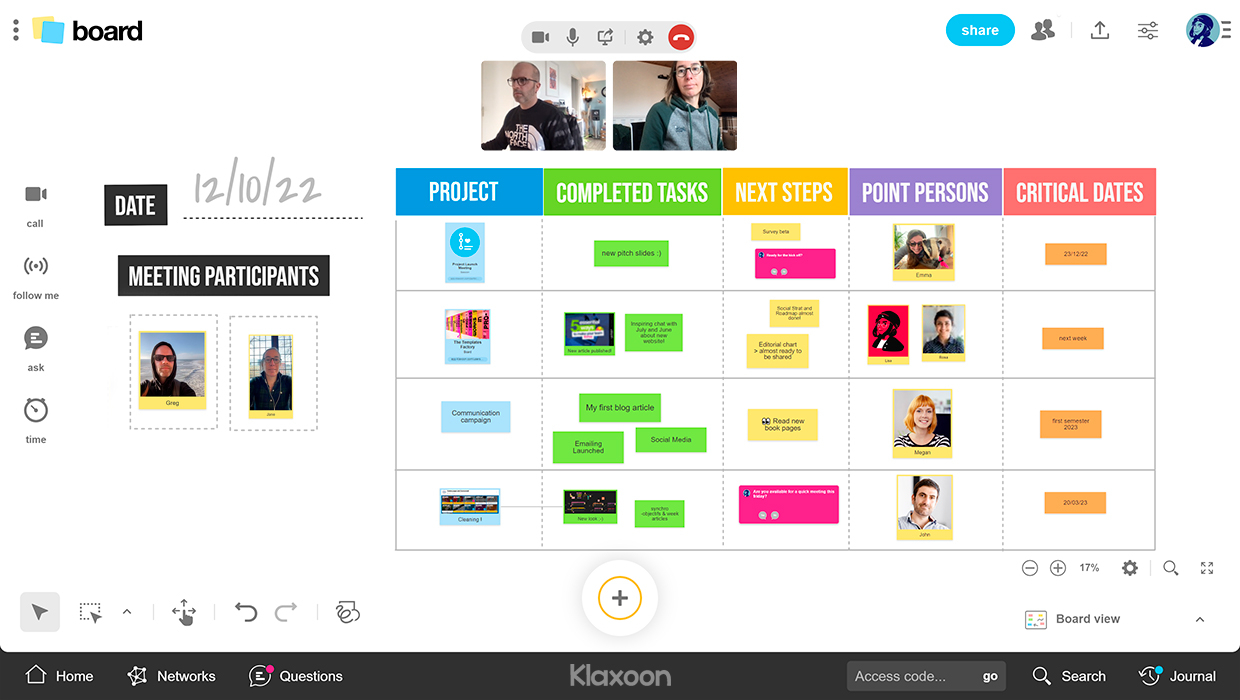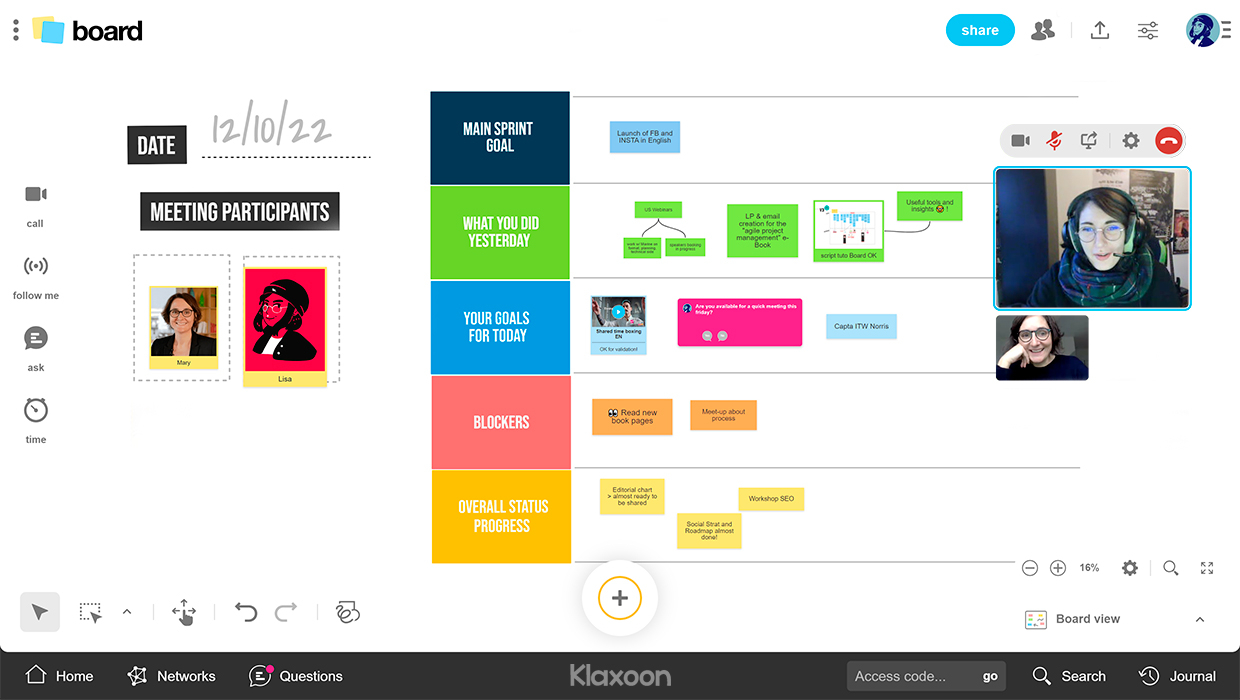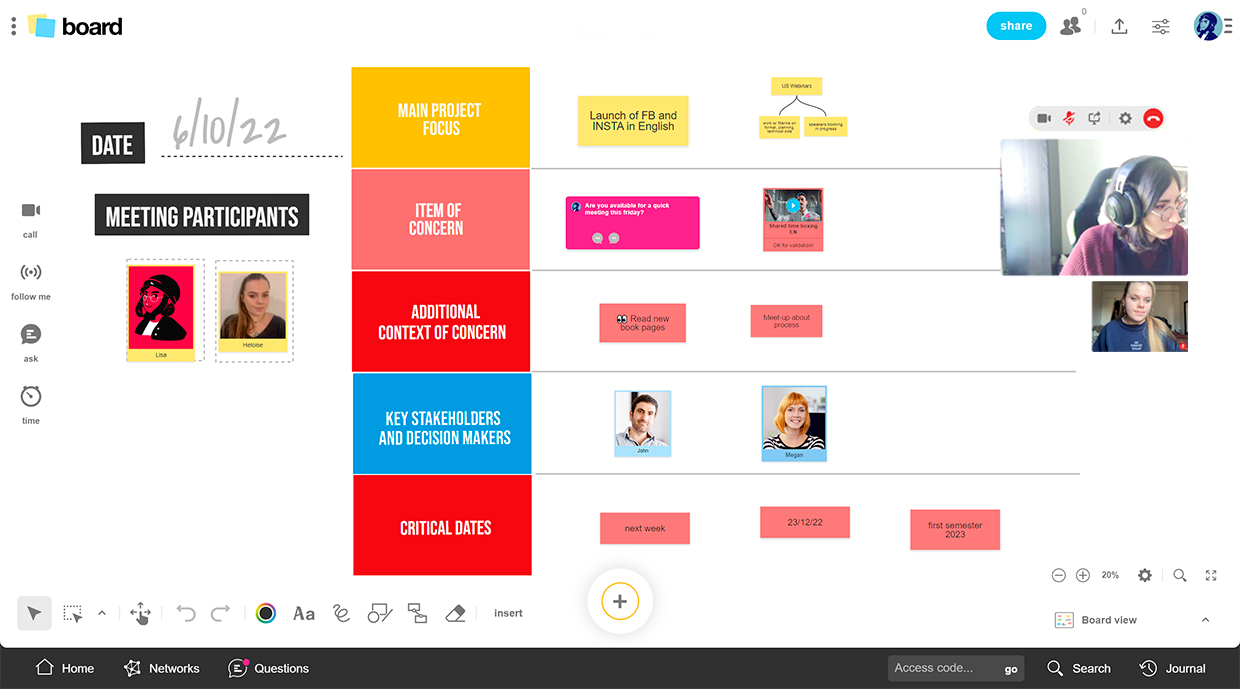3 useful formats for 1-on-1 team meetings
Organizations today are continually growing in complexity to meet the market demands that are imposed on the firm. It’s only natural that as the needs evolve, so do the roles attached to these products and services. But in the continued move towards bigger and better offerings, it can be easy to forget that people remain on the other side of these market commodities.
It can be easy to feel like a cog in the machine when it comes to these highly intricate business groups. With larger companies often spanning different regions and even entire continents, the status and contributions of a single employee can be easily overlooked. This can lead to the much dreaded “burnout” that has begun its rise as one of the most heated concerns in the workplace.
But, like any good business problem, you don’t have to simply accept this phenomenon as it is. There are ways to circumvent the growing unrest from an underappreciated workforce, and one concrete way to do this is to utilize the 1-on-1 meeting. In this article, we will look into why 1-on-1 meetings still matter, the benefits of these meetings, and helpful discussion templates to make your next meeting all the more effective.
Why 1-on-1 Meetings are Necessary
You may have come across different resources that have talked about the importance of soft skills. These are the skills that focus on how you personally connect with people (otherwise known as interpersonal skills) that allow you to better communicate with those around you all while keeping company objectives and directions in mind.
Soft skills, then, are a highly prized asset for any manager to have. As such, it’s absolutely key for a manager to utilize and hone this skill through regular 1-on-1 with those you work with, especially if you have direct reports. But with the advent of remote work and the almost instantaneous nature of information, some people ask: what is the point of one-on-one discussions still? The concept of working together and collaboration has evolved over the proliferation of remote working, so some find that the office tradition of 1-on-1 meetings is a relic of this bygone past.
But 1-on-1 meetings weren’t just a corporate way of adding additional managerial oversight in the guide of check-in, but a truly effective way to build a system of trust and affinity with the people you work with. Through these regular discussions, managers and employees begin building a relationship of trust via open communication of concerns and important points that might often get lost in the regular minutia of things. After all, as Frances Frei and Anne Morriss’s opine, proper leadership always begins with trust.
Collaboration gets a boost from one-on-one meetings as well, as the free exchange of ideas likely leads to a better environment for joint innovation on specific topics. This personal “face-to-face” time with peers and direct-reports help develop camaraderie on a workplace culture level as well. If you have a specific behavior you want to instill as part of the way you regularly manage work, then doing so in the form of these 1-on-1 discussions is a great way to begin gauging how well someone has bought-in into the company culture. Through a properly crafted culture, you can continue to drive workplace satisfaction, engagement, and overall higher levels of performance.
1-on-1 Meetings and Their Benefits
1-on-1 meetings aren’t just there to develop more abstract workplace factors such as trust and camaraderie, but have actual material benefits to your business in both the short-term and the long-term. These meetings serve as handy checkpoints for you and your team on an individual level, giving you better oversight on everything going on as well as generating the much needed input from anyone you need insights from.
Better Synergies
Synergy, in the most broadly corporate terms, refers to the phenomenon of when organizations combine in order to create better value for stakeholders through realized efficiencies. Commonly seen through the lens of M&A transactions, the concept of synergy is also routinely applied whenever a company manages to combine resources to better address their business needs.
In a more collaborative sense, a business synergy can be realized by simple alignment of stakeholder needs, be it internal or external. Through these regular one-on-one meetings, the overall outlook of two or more of these stakeholders can be better matched so that all parties realize their desired outcomes without impeding on another.
Without cadences like this, teams often fall into inefficiencies such as redundancy in workload, conflicts in resource allocation, and even just general confusion regarding exact work to be done. 1-on-1 can help handle these issues and to escalate if need be.
Access to Quick Feedback
Beyond the opportunity to realize real synergies within your team and other cross-functional partners, it’s incredibly useful to have these 1-on-1 meetings for quick access to feedback when needed.
HR Solutions platform HR Central expounds on the importance of feedback in the workplace, writing that it “clarifies expectations, helps people learn from their mistakes and builds confidence”. In a business landscape where employees look as much towards their own development as the company’s, it’s absolutely key to provide as many avenues for feedback as possible.
Feedback can also help you better guide your peers towards their desired outcomes. Often projects are laden with ambiguity, and your experience can better inform those who might not have had the exposure to the same task (the same applies to you if you happen to need guidance on a particular subject).
Less Error Risk
In keeping with the idea of regular synergies and feedback, its overall boon to your business is the decreased likelihood of major errors with respect to the type of work that needs to be done. With regular check-ins facilitated by one-on-ones, you’re more likely to catch potential errors in their early stages. This saves you and your team time and, at times, money in addressing issues before they blow up into larger scale problems. For some more critical industries, this risk mitigation can mean exponential benefits for the company and reduced catastrophe in the event of a miscalculation or misstep in a process.
3 Examples For Your Teams
Discussing the process of holding one-on-one discussions with your team might sound relatively intuitive — admittedly there isn’t much to expound upon what amounts to be a conversation between colleagues— but the brunt of the difficulty of these discussions is its propensity to fall into disorganization.
When you enter a conversation with someone in most settings, you’re likely not to be thinking about any overarching framework or template to guide you through the discussion. This is only natural as most interactions are free from and require this to feel natural and unforced.
But 1-on-1 meetings are a different type of conversation to be held. Yes, it is still in the form of a two-way discussion, but 1-on-1 meetings thrive off of an organized conversation. In comparison to more informal talks, a one-on-one meeting can benefit from having an overall objective set. This can take the form of a pre-meeting agenda, but can also utilize discussion formats to avoid the necessity of sending an agenda constantly beforehand. These 1-on-1 meetings should feel natural, but a guiding hand to make the conversation more productive can help you make the most of what is likely a weekly 30-minute interaction.
Working Project Status Format
One of the most intuitive ways to hold your 1-on-1 discussion is to utilize the “Working Project Status” format, where each of your team members doing a 1-on-1 will give a detailed itemized list of their current projects, their respective statuses, as well as any hurdles that they may be facing.
Project managers might be more familiar with this approach as it allows them to see an overview of all the statuses of critical and non-critical projects. This can help the team decide on focus points, call out any potential red flags, and even give advice on managing specific processes.
Example Working Project Status Format


A 1-on-1 meeting with a working project status table realized on Board
This is a handy table that you can choose to modify for your next 1-on-1 meeting as it clearly lines up all your projects in an organized manner and provides an overview of each one through the dimensions of what has been completed (Completed Tasks), the specific necessary next steps (Next Steps), who the key individuals involved are (Point Persons), as well as critical deadlines to adhere to (Critical Dates). Additional columns can be added depending on the nature and context of the task at hand.
Sprint Task List Format
The next format that you can utilize for your 1-on-1 meeting is to borrow a strategy from Scrum project management users, that is the daily sprint meeting. These short 15-30 minute meetings are focused on specific short-term tasks that can be accomplished within a set time frame, usually around 1-4 weeks depending on complexity of the task.
While this is a more popular method within agile-focused teams working in computer engineering, the process has since been adopted by a variety of industries, from education to event planning. It’s an incredibly efficient and useful 1-on-1 meeting format that can help you prioritize the most critical deliverable as well as avoiding any burnout due to overloading as work will be focused on what will be established in the discussion.
Using a Kanban table to review the Sprint can be a very effective way to present tasks and goals.
Example Sprint Task List Format


A 1-on-1 meeting with a Sprint Task Table realized on Board
Compared to the Working Project Status Format, the Sprint task list is focused on whatever the decided upon main short-term project goal is. This could take the form of a larger initiative that requires many different sub steps or even smaller tasks that require more refined execution (such as budgeting for an event).
You’ll want to start off each 1-on-1 with defining what that sprint goal is, with the more specificity and context given the better. Next, expound upon the tasks you completed the previous day as it gives you and your discussion partner better understanding on some of the most immediately finished items. After this, you’ll want to outline what you plan to do today as well as identify any potential “blockers” or hurdles to completing this task. Lastly, put all of this into perspective back to the main sprint goal by describing the entire status of the sprint in respect to the tasks you’ve completed so far and plan to complete today.
As you can see, this is a much more short-term focused format, which can be immensely useful for extremely time-sensitive and critical tasks that need focusing in on.
Focused-Concern Format
Lastly, in line with getting more granular into specific tasks within your team, a useful format to follow to address discussions in a more action-oriented way is to utilize the “Focused-Concern” format. This keeps your 1-on-1 discussion focused on a specific critical concern that you’re currently facing in your work, which can be reflected in a difficult problem hindering progress, a new initiative without clear processes, and even interpersonal issues that arise in day-to-day operations.
This is the most specific targeted format to utilize for your one-on-one meeting as it essentially brings you and your conversation partner into problem-solving mode on a very specific topic. This can provide you additional insights and exposure to information you might not have been aware of and give better transparency into ways to address certain issues.
Example of Focused-Concern Format


A 1-on-1 meeting with a Focused-Concern table realized on Board
Similar to the sprint task list format, the focused-concern format focuses on a specific and concrete project as the first part of the discussion. This helps ground the conversation to that specific project and keeps other discussion points within scope of that. After this, begin describing the specific item of concern in regards to that project as well as additional contexts to help give as much information regarding the background of that concern. This can include historically run initiatives, whitepaper outlines, and even informal aspects that relate more to interoffice politics.
Part of this format’s effectiveness is to begin ideating on the key stakeholders that are most affected by this concern as well as which persons would be most responsible for key decision making. Lastly, you’ll want to inform your counterpart of the critical dates in which you’ll need to resolve this concern to give you both a timeframe in which to address the issue.
Unlock your teamwork potential
For free, make your first steps to top-tier work efficiency with the Klaxoon Work Collaboration Platform.